#high efficiency solar panels
Explore tagged Tumblr posts
Text
The Role of Solar in Creating Net-Zero Cities by 2025: A Sustainable Future

In the global race to combat climate change, cities have taken center stage with an ambitious goal: becoming Net-Zero Cities by 2025. This vision involves eliminating or offsetting carbon emissions entirely to ensure a sustainable future. One solution is key to this transition: solar energy. As a clean and renewable energy source, solar power is at the forefront of transforming urban infrastructure and paving the way for a carbon-free future.
In this article, we explore the critical role solar energy plays in the movement toward net-zero cities. From energizing skyscrapers to powering public transport, solar has become the backbone of urban sustainability. We'll also highlight contributions from leading manufacturers like Rayzon Solar, whose innovations are turning the net-zero vision into reality.
Solar Energy: A Catalyst for Net-Zero Cities
Why Solar Power?
Solar power isn't just another renewable energy option—it's an essential component of the net-zero movement. Unlike fossil fuels, which emit harmful greenhouse gases, solar energy harnesses the sun’s rays to generate electricity without pollution. This makes it a cornerstone for cities aiming to reduce their carbon footprints by 2025.
Urban centers around the world are adopting solar technology at an accelerating pace. From solar-powered streetlights to electric buses, cities are reimagining their landscapes with sustainability at the forefront. This shift is crucial for achieving renewable energy goals, ensuring urban growth doesn’t come at the environment’s expense.
For more insights on how solar energy is reshaping urban environments, read here.
The Benefits of Solar for Urban Development
Solar energy offers cities a multitude of benefits that help achieve net-zero status:
Reduced Greenhouse Gas Emissions: Solar power is entirely carbon-free, helping cities meet ambitious climate goals.
Energy Independence: Cities can reduce their reliance on fossil fuels by generating their own clean electricity.
Economic Growth: Solar energy stimulates job creation and fosters local economic development.
Improved Public Health: By replacing fossil fuels, solar energy improves air quality and reduces health risks associated with air pollution.
Learn how solar energy can improve air quality and create a sustainable future.
Urban Integration of Solar: Transforming City Planning
Designing Solar-Powered Cities
Integrating solar energy into urban landscapes isn’t just about installing rooftop panels—it’s about rethinking city planning. High-efficiency solar panels can now be incorporated into building facades, public lighting systems, and electric vehicle charging stations. This integrated approach makes solar a versatile solution for cities of all sizes.
Did you know? New York City is set to install 100 MW of solar panels on city-owned buildings by 2025, reducing its carbon footprint by up to 80%.
Cutting-Edge Solar Technologies
Recent advancements in solar technology have made urban integration more practical than ever. Innovations like bifacial panels that capture sunlight from both sides and thin-film solar panels that are flexible and lightweight make solar ideal for city environments with limited space.
Top manufacturers like Rayzon Solar are pioneering the production of urban-friendly solar solutions. Their high-efficiency panels are designed to withstand harsh urban environments, offering long-term reliability.
Case Study: Copenhagen – A Solar-Powered City on Track for Net-Zero
Copenhagen is on track to become the first carbon-neutral city by 2025, thanks to its extensive use of solar power. Solar panels across public buildings generate enough electricity to power thousands of homes, significantly reducing the city’s emissions. The ambitious Copenhagen Climate Plan demonstrates that even as urban populations grow, cities can still reduce their carbon footprints.
Solar-Powered Public Transport: Leading by Example
Forward-thinking cities like San Francisco and Paris are incorporating solar energy into their public transport systems. Solar-powered buses and trains not only reduce emissions but also cut operational costs, making cities more sustainable and energy-efficient.
Discover more about solar energy’s future role in transportation.
Overcoming Challenges in Urban Solar Deployment
Addressing Space Constraints
One of the major challenges for cities is finding space to install solar panels. However, vertical solar farms and Building-Integrated Photovoltaics (BIPV) offer solutions by incorporating solar panels directly into urban structures. These innovations allow cities to maximize available space and generate clean energy even in densely populated areas.
For more on solar’s role in reshaping city planning, read here.
Navigating Regulatory and Financial Hurdles
Cities may face regulatory and financial barriers when adopting solar energy solutions. However, many are offering incentives for solar installations and simplifying approval processes to encourage solar adoption. Partnerships with top solar companies like Rayzon Solar are also vital in navigating these challenges.
The Future of Solar-Powered Cities
As we approach 2025, the role of solar energy in cities will only continue to expand. Innovations such as solar windows and solar roads are being tested and may soon revolutionize urban environments. With technologies like these, cities can meet growing energy demands sustainably.
Explore the groundbreaking solar innovations shaping 2024.
Policy and Community Engagement: Keys to Success
Government policies and public support are crucial for the future of solar in cities. Initiatives such as tax incentives for homeowners and businesses, combined with public awareness campaigns, will drive the adoption of solar solutions, ensuring the success of the net-zero movement.
Empower your community with solar solutions for a cleaner, greener future.
Conclusion: Solar Energy Paves the Path to Net-Zero Cities
The transition to Net-Zero Cities by 2025 represents more than an environmental goal—it’s a blueprint for a sustainable future. Solar energy, driven by innovative manufacturers like Rayzon Solar, is at the heart of this movement, offering scalable solutions to meet the challenges of urbanization and climate change.
As cities continue to grow, their reliance on sustainable energy will become even more critical. Solar power offers a clear path forward, empowering urban centers to meet their renewable energy targets and contribute to a global shift toward sustainability. With leaders like Rayzon Solar at the forefront, the future of urban energy is bright—and green.
#Net-Zero Cities#Solar Energy Transition#Urban Solar Solutions#2025 Renewable Goals#Sustainable Urban Planning#High-Efficiency Solar Panels#Solar Power in Cities#Top Solar Companies Contributing to Net-Zero Cities#Solar for Sustainable Cities#Top Solar Manufacturers
0 notes
Text
Why are wind turbines all equipped with three blades? Uncovering the science behind it.
#huijuegroup#renewableenergy#homeenergy#energy#smartgrid#wind power#high efficiency flexible solar panels
0 notes
Text
The Best News of Last Year - 2023 Edition
Welcome to our special edition newsletter recapping the best news from the past year. I've picked one highlight from each month to give you a snapshot of 2023. No frills, just straightforward news that mattered. Let's relive the good stuff that made our year shine.
January - London: Girl with incurable cancer recovers after pioneering treatment

A girl’s incurable cancer has been cleared from her body after what scientists have described as the most sophisticated cell engineering to date.
2. February - Utah legislature unanimously passes ban on LGBTQ conversion therapy

The Utah State Legislature has unanimously approved a bill that enshrines into law a ban on LGBTQ conversion therapy.
3. March - First vaccine for honeybees could save billions

The United States Department of Agriculture (USDA) has approved the world’s first-ever vaccine intended to address the global decline of honeybees. It will help protect honeybees from American foulbrood, a contagious bacterial disease which can destroy entire colonies.
4. April - Fungi discovered that can eat plastic in just 140 days

Australian scientists have successfully used backyard mould to break down one of the world's most stubborn plastics — a discovery they hope could ease the burden of the global recycling crisis within years.
5. May - Ocean Cleanup removes 200,000th kilogram of plastic from the Pacific Ocean

The Dutch offshore restoration project, Ocean Cleanup, says it has reached a milestone. The organization's plastic catching efforts have now fished more than 200,000 kilograms of plastic out of the Pacific Ocean, Ocean Cleanup said on Twitter.
6. June - U.S. judge blocks Florida ban on care for trans minors in narrow ruling, says ‘gender identity is real’

A federal judge temporarily blocked portions of a new Florida law that bans transgender minors from receiving puberty blockers, ruling Tuesday that the state has no rational basis for denying patients treatment.
7. July - World’s largest Phosphate deposit discovered in Norway

A massive underground deposit of high-grade phosphate rock in Norway, pitched as the world’s largest, is big enough to satisfy world demand for fertilisers, solar panels and electric car batteries over the next 50 years, according to the company exploiting the resource.
8. August - Successful room temperature ambient-pressure magnetic levitation of LK-99

If the claim by Sukbae Lee and Ji-Hoon Kim of South Korea’s Quantum Energy Research Centre holds up, the material could usher in all sorts of technological marvels, such as levitating vehicles and perfectly efficient electrical grids.
9. September - World’s 1st drug to regrow teeth enters clinical trials

The ability to regrow your own teeth could be just around the corner. A team of scientists, led by a Japanese pharmaceutical startup, are getting set to start human trials on a new drug that has successfully grown new teeth in animal test subjects.
10. October - Nobel Prize goes to scientists behind mRNA Covid vaccines

The Nobel Prize in Physiology or Medicine has been awarded to a pair of scientists who developed the technology that led to the mRNA Covid vaccines. Professors Katalin Kariko and Drew Weissman will share the prize.
11. November - No cases of cancer caused by HPV in Norwegian 25-year olds, the first cohort to be mass vaccinated for HPV.
Last year there were zero cases of cervical cancer in the group that was vaccinated in 2009 against the HPV virus, which can cause the cancer in women.
12. December - President Biden announces he’s pardoning all convictions of federal marijuana possession

President Joe Biden announced Friday he's issuing a federal pardon to every American who has used marijuana in the past, including those who were never arrested or prosecuted.
------
And there you have it – a year's worth of uplifting news! I hope these positive stories brought a bit of joy to your inbox. As I wrap up this special edition, I want to thank all my supporters!
Buy me a coffee ❤️
Merry Christmas and Happy New Year!
6K notes
·
View notes
Text
Solar Powered Outdoor Lights Market Analytical Overview and Growth Opportunities by 2032
The solar-powered outdoor lights market has been experiencing significant growth due to increasing environmental awareness and the growing adoption of sustainable energy solutions. Solar-powered outdoor lights utilize solar panels to convert sunlight into electricity, eliminating the need for traditional power sources. These lights are widely used for outdoor illumination in residential, commercial, and industrial settings.
Analysis:
The solar-powered outdoor lights market is expected to witness robust growth during the forecast period, driven by the increasing demand for sustainable lighting solutions.
North America and Europe are anticipated to dominate the market due to stringent regulations promoting renewable energy adoption.
Asia Pacific region is expected to experience significant growth, supported by rapid urbanization and government initiatives in countries like China and India.
Technological advancements, such as improved solar panel efficiency and battery storage capabilities, are expected to drive market growth.
Key challenges include the high upfront cost of solar-powered outdoor lights and the limited availability of sunlight in certain regions. However, declining solar panel costs and advancements in battery technology are mitigating these challenges.
Growth Opportunities:
Increasing government initiatives promoting renewable energy and energy-efficient lighting solutions.
Growing demand for smart solar-powered outdoor lights integrated with advanced technologies like motion sensors and remote control capabilities.
Rapid urbanization and infrastructure development in emerging economies, driving the need for reliable and sustainable lighting solutions.
Rising consumer awareness about the benefits of solar energy and the need to reduce carbon footprints.
Technological advancements leading to improved efficiency, longer battery life, and enhanced aesthetics of solar-powered outdoor lights.
Key Points:
Solar-powered outdoor lights offer significant cost savings over traditional lighting solutions, as they eliminate electricity bills and reduce maintenance costs.
These lights are environmentally friendly, as they do not emit harmful greenhouse gases and reduce reliance on fossil fuels.
Solar-powered outdoor lights provide reliable illumination even in remote areas without access to electricity grids.
The market is witnessing increased collaborations and partnerships among key vendors to expand their product portfolios and geographical presence.
The integration of solar-powered outdoor lights with smart home systems and IoT technologies is opening up new opportunities for market growth.
We recommend referring our Stringent datalytics firm, industry publications, and websites that specialize in providing market reports. These sources often offer comprehensive analysis, market trends, growth forecasts, competitive landscape, and other valuable insights into this market.
By visiting our website or contacting us directly, you can explore the availability of specific reports related to this market. These reports often require a purchase or subscription, but we provide comprehensive and in-depth information that can be valuable for businesses, investors, and individuals interested in this market.
“Remember to look for recent reports to ensure you have the most current and relevant information.”
Click Here, To Get Free Sample Report: https://stringentdatalytics.com/sample-request/solar-powered-outdoor-lights-market/6229/
Market Segmentations:
Global Solar Powered Outdoor Lights Market: By Company • Greenshine New Energy • SBM-SolarTech • Signify Holding • Jiawei • LEADSUN • OkSolar • SEPCO Solar Electric Power Company • SOKOYO • Solar Street Lights USA • Sunna Design SA Global Solar Powered Outdoor Lights Market: By Type • Less than 39W • 40W to 149W • More than 150W Global Solar Powered Outdoor Lights Market: By Application • Residential • Commercial • Industrial • Goverment Global Solar Powered Outdoor Lights Market: Regional Analysis All the regional segmentation has been studied based on recent and future trends, and the market is forecasted throughout the prediction period. The countries covered in the regional analysis of the Global Solar Powered Outdoor Lights market report are U.S., Canada, and Mexico in North America, Germany, France, U.K., Russia, Italy, Spain, Turkey, Netherlands, Switzerland, Belgium, and Rest of Europe in Europe, Singapore, Malaysia, Australia, Thailand, Indonesia, Philippines, China, Japan, India, South Korea, Rest of Asia-Pacific (APAC) in the Asia-Pacific (APAC), Saudi Arabia, U.A.E, South Africa, Egypt, Israel, Rest of Middle East and Africa (MEA) as a part of Middle East and Africa (MEA), and Argentina, Brazil, and Rest of South America as part of South America.
Visit Report Page for More Details: https://stringentdatalytics.com/reports/solar-powered-outdoor-lights-market/6229/
Reasons to Purchase Solar Powered Outdoor Lights Market Report:
• To obtain insights into industry trends and dynamics, including market size, growth rates, and important factors and difficulties. This study offers insightful information on these topics.
• To identify important participants and rivals: This research studies can assist companies in identifying key participants and rivals in their sector, along with their market share, business plans, and strengths and weaknesses.
• To comprehend consumer behaviour: these research studies can offer insightful information about customer behaviour, including preferences, spending patterns, and demographics.
• To assess market opportunities: These research studies can aid companies in assessing market chances, such as prospective new goods or services, fresh markets, and new trends.
• To make well-informed business decisions: These research reports give companies data-driven insights that they may use to plan their strategy, develop new products, and devise marketing and advertising plans.
In general, market research studies offer companies and organisations useful data that can aid in making decisions and maintaining competitiveness in their industry. They can offer a strong basis for decision-making, strategy formulation, and company planning.
About US:
Stringent Datalytics offers both custom and syndicated market research reports. Custom market research reports are tailored to a specific client's needs and requirements. These reports provide unique insights into a particular industry or market segment and can help businesses make informed decisions about their strategies and operations.
Syndicated market research reports, on the other hand, are pre-existing reports that are available for purchase by multiple clients. These reports are often produced on a regular basis, such as annually or quarterly, and cover a broad range of industries and market segments. Syndicated reports provide clients with insights into industry trends, market sizes, and competitive landscapes. By offering both custom and syndicated reports, Stringent Datalytics can provide clients with a range of market research solutions that can be customized to their specific needs
Contact US:
Stringent Datalytics
Contact No - +1 346 666 6655
Email Id - [email protected]
Web - https://stringentdatalytics.com/
#Solar Powered Outdoor Lights Market Analytical Overview and Growth Opportunities by 2032#The solar-powered outdoor lights market has been experiencing significant growth due to increasing environmental awareness and the growing#eliminating the need for traditional power sources. These lights are widely used for outdoor illumination in residential#commercial#and industrial settings.#Analysis:#•#The solar-powered outdoor lights market is expected to witness robust growth during the forecast period#driven by the increasing demand for sustainable lighting solutions.#North America and Europe are anticipated to dominate the market due to stringent regulations promoting renewable energy adoption.#Asia Pacific region is expected to experience significant growth#supported by rapid urbanization and government initiatives in countries like China and India.#Technological advancements#such as improved solar panel efficiency and battery storage capabilities#are expected to drive market growth.#Key challenges include the high upfront cost of solar-powered outdoor lights and the limited availability of sunlight in certain regions. H#declining solar panel costs and advancements in battery technology are mitigating these challenges.#Growth Opportunities:#Increasing government initiatives promoting renewable energy and energy-efficient lighting solutions.#Growing demand for smart solar-powered outdoor lights integrated with advanced technologies like motion sensors and remote control capabili#Rapid urbanization and infrastructure development in emerging economies#driving the need for reliable and sustainable lighting solutions.#Rising consumer awareness about the benefits of solar energy and the need to reduce carbon footprints.#Technological advancements leading to improved efficiency#longer battery life#and enhanced aesthetics of solar-powered outdoor lights.#Key Points:#1.#Solar-powered outdoor lights offer significant cost savings over traditional lighting solutions#as they eliminate electricity bills and reduce maintenance costs.
0 notes
Text
Your 4th House Sign And Your Ideal Living Environment 🏡

Aries 4H: living somewhere that is a good launchpad for you to do other things. Only being home for short amounts of time. A place where you can be physically active: home gym, treadmill etc. A place with a good kitchen that’s well equipped: gas oven, microwave, toaster oven, etc.
Taurus 4H: living in a place that is luxurious and comfortable. A home or apartment with amenities. A home that is well built and sturdy, it has good structural integrity. Living in a area surrounded by nature, trees, flowers. Somewhere that is relaxing. Living in countryside or suburbs. Living on a farm.
Gemini 4H: living somewhere with multiples: multiple bathrooms, bedrooms, mirrors etc. somewhere where you can participate in hobbies at home. Having a garden, game room, community room etc. living with a friend or sibling. A place with good WiFi. Living in walkable city, you live walking distance to supermarket etc.
Cancer 4H: living somewhere that is peaceful and serene. Living in a comfortable environment. It is a pleasant sensory experience: quiet, gets great sunlight, prefect size etc. A place with good amount of privacy and security. Living Oceanside, near water or the beach. Living traditionally in a suburb or archetypal home. Living with family.
Leo 4H: living in a place that is like a castle. High rise apartment condo, house in the hills. A home fit for royalty. Living in a gated community. Living in proximity to celebrities. Living like royalty: having house staff. Living in an environment that looks glamorous.
Virgo 4H: living somewhere modern and clean. Everything is new, updated and functioning well. Somewhere efficient, and well organized. Properity is well taken care of. Living somewhere that is easy to keep clean: hardwood floors, marble surfaces. House is pristine and untouched.
Libra 4H: living somewhere peaceful and aesthetically pleasing. A place with good architecture, a home that is artistic in someway. It’s neutral overall: not to big or too small. It is close to city but not to far either. Prefers to live with spouse.
Scorpio 4H: living somewhere that offers privacy and protection. Living somewhere secretive that’s not accessible to public. Private gated community, hidden hills etc. Having security codes, access codes, doorman, front desk person etc. Home that has powerful spiritual energy.
Sagittarius 4H: living in and environment that is flexible. Like a studio. Living abroad or internationally. Living amongst foreigners and immigrants. Living somewhere that gives you freedom: having a month to month lease, renting short term etc. Living in a diverse major city. Metropolitan environment. Living in a big house with alot of space.
Capricorn 4H: living somewhere that is well structured. Building that is antiquated or prestigious. Home looks like office, you have your office in your house. Living in a traditional home or apartment, nothing too unique or out of ordinary. Living near the state capital or government buildings.
Aquarius 4H: living somewhere that is good for environment. Eco conscious living. Living with friends/ having communal living space. Prefers not to live completely alone but having friends, roommates or house staff. Having unique quirks in home, like gadgets, speaker system, solar panels etc. living environment is out of the ordinary for some reason.
Pisces 4H: living somewhere that is like a sanctuary. Home has powerful spiritual energy: good numerology, energetically cleansed etc. home is in isolated place. Living in home where you feel disconnected from world around you. Home seems haunted, spooky or abandoned. Living near the beach or bodies of water. Living in foreign lands. Living somewhere that’s hard to find.
#astrology#4th house#birthchart#aries#gemini#libra#aquarius#leo#sagittarius#starsandsuch#2024#astro observations#astrology observations
1K notes
·
View notes
Note
Has there been any instances where Mc and C did work together other than the fake baby thingy?
the science lab was filled with high schoolers scrambling to set up their projects, all of them either too caffeinated or not caffeinated enough for the stress of the prestigious state science fair in washington.
the tables were crammed with an impressive array of projects: models of volcanic eruptions, elaborate circuits blinking in synchronized colors, experiments with soil composition in tiny terrariums. but none of them held a candle to your table, and you knew it.
you worked quickly, your fingers deft as you adjusted the components of the intricate apparatus. the machine—an elegant contraption meant to demonstrate clean energy storage using solar capacitors—was you and C’s brainchild.
they had done the research, the design, the equations scribbled out with ruthless precision in their sharp handwriting. you’d handled the practical end of things: soldering wires, programming the software, ensuring that their theoretical masterpiece could actually, you know, work.
you didn’t notice the way C stood a few feet away, arms crossed tightly, their posture as stiff as a statue’s. their chalcedony green eyes followed your every move like a hawk watching its prey, catching each adjustment you made, each tool you reached for.
finally, they cleared their throat. “you’re doing it wrong.”
you sighed without turning around, tightening a bolt on the panel. “good morning to you, too, lacroix. nice to see you’re in a supportive mood today.”
“supportive?” their voice had that sharp, clipped quality it always took on when they thought you were being deliberately obtuse. “i’d be supportive if you weren’t—” they made an exasperated noise, gesturing vaguely at the machine. “look, the angles on the solar panels are all wrong. the light’s not going to hit them efficiently like that. it’s basic geometry. i explained this to you yesterday.”
“okay,” you said evenly, glancing at them over your shoulder. “anything else?”
C blinked, their expression flickering into something almost like confusion. “you’re just... accepting it? like that?”
“well, yeah,” you said, shrugging. “you’re the brains behind this, aren’t you? if you’ve got more suggestions, i’m open to them.”
C suddenly seemed at a loss for words. the tips of their ears turned a faint pink, and they glanced away.
“well, i, uh...” they began, before scowling at you like it was somehow your fault they’d stumbled. “fine! move the reflector two inches to the left.”
you did as they asked, your motions slow and deliberate. “happy?”
“stop talking to me,” C snapped.
you blinked at them, incredulous. “you’re the one bossing me around!”
C ignored you, their nose tilting upward in that infuriatingly haughty way they’d perfected.
***
when the judges arrived at your school’s section, the air grew thick with anticipation. there were four of them—an engineer from spacex, a college professor from MIT, a tech startup CEO, and some local entrepreneur who had been introduced as a ‘philanthropist.’
they moved from table to table with an efficiency that made your stomach churn. you’d been rehearsing your answers for days, but there was something about the way they scribbled on their clipboards that made even your confidence waver.
but the presentation began smoothly enough, much to your relief. C handled the technical explanations, their voice steady and precise as they guided the judges through the intricacies of your design. you handled the broader picture, spinning a compelling narrative about its real-world applications.
but when the judges started asking questions, something shifted.
“so, who came up with the original concept?” the engineer asked, pen poised over her notepad.
“well,” you started, “it was—”
“me,” C interrupted, their green eyes glinting. “i developed the initial framework.”
you gave them an irritated look. “what they actually meant to say was that it was a joint effort.”
“sure,” C drawled sarcastically. “you jointly borrowed my calculations and then messed up the assembly two separate times.”
you bristled. “maybe if your diagrams weren’t as convoluted as your personality, i wouldn’t have had to ‘mess up’ anything.”
“convoluted? that’s rich, coming from someone who thought capacitors and resistors were interchangeable—”
“that was one time, and it only happened because you mislabeled them!”
the judges exchanged glances, two of them clearly trying not to laugh, the other two looking mildly alarmed.
“would you say you two work well together?” another judge ventured cautiously.
“oh, absolutely,” you said, your tone dripping with sarcasm.
“can’t agree more,” C added, voice as flat as a table.
the judge raised an eyebrow, scribbling something down.
by the end of the presentation, both of you were red-faced and fuming, but the machine worked perfectly, and the judges seemed reluctantly impressed.
***
after the presentation, you and C sat side by side in the waiting area, the hum of chatter and distant applause filling the space. your hands rested in your lap, but when you shifted slightly, your fingers brushed against theirs. the accidental contact sent a jolt of heat up your arm, and you risked a glance at them.
C was staring angrily at the floor as if it had just demanded to drain their bank account, half of their face buried in the high collar of their dark green turtleneck. the tips of their ears had turned even more pink. their foot tapped against the floor in rapid, agitated beats.
when the winners were announced, your names rang out together, tethered like an inevitability.
you and C locked eyes, both startled, before standing up in unison. the applause was loud, but all you could focus on was the awkwardness of walking side by side to accept the award.
you still fell into step beside them, the trophy handed over in a flurry of handshakes and flashes from the crowd’s cameras.
the microphone passed between you two for the acceptance speech.
“we’d like to thank our school for supporting this project,” you began, glancing at C.
“and, of course, this wouldn’t have been possible without the cooperation of my... partner,” they added, their jaw tightening as if the words physically pained them to say.
you were tempted to laugh at how they looked like they were having a particularly bad case of indigestion, but managed to keep a straight face for the cameras.
***
after the ceremony, the two of you lingered near the refreshment table. C cleared their throat awkwardly, avoiding your gaze.
“you did... good,” they muttered.
you cocked your head, thinking you misheard them. “what?”
“i said you did good,” they repeated, louder this time. “you didn’t embarrass us. much.”
you snorted. “thanks, i guess. you weren’t too bad yourself.”
C hesitated, their eyes darting to the trophy in their right hand as their other hand fidgeted with the edge of their aldervale prep blazer.
“you’re smart though,” they said finally, their voice softer than usual. “you would’ve won without me.”
the admission startled you. “was that... a real compliment?”
this time, C’s cheeks turned pink as well, and they huffed loudly, turning on their heel. “i’m leaving. and i’m taking the trophy.”
“wait, what?” you snapped out of your stupor and hurried after them. “that’s not fair, lacroix! we both won!”
“too bad, starkid,” C called over their shoulder, their tone maddeningly smug. “you want it? come and get it.”
you groaned, chasing them through the crowd. “lacroix, get back here!”
and for the first time all day, C’s smile was genuine enough for their dimples to show.
#my god they’re stupid#fellas is it weirdly romantic to chase each other through crowds?#upcoming scenario is gonna be for M 😗#if: the ballad of the young gods#interactive fiction#interactive novel#interactive story#twine wip#ro: c lacroix#ro scenarios
213 notes
·
View notes
Text
Ignition
Once the Galactic Coalition had (without other realistic options) given Humanity an equal position among the governing bodies, despite the fact they were a single planet race, the initial dread of what they would do eased. A little. When they showed how they powered their impossibly massive vessels, the fears of our ancestors who deemed the Responsibility Barrier a necessity reemerged a thousandfold.
The Humans, with a slight grin, said "Solar power, of course."
They took a delegation within the bowels of one of their smaller, civilian research craft, which was still bulkier, better armored, and more worryingly - better armed than most flagships of the other predator-races. Were we not able to see with our own eyes their actual, what they aptly call, Dreadnoughts, from distances you would normally need a telescope, we would have assumed this was their mightiest warship. Yet it was just one of hundreds.
As we passed through the ludicrously thick and seemingly excessive number of bulkheads and shielded and compartmentalized hallways, the ever present hum of raw power beneath our feet gradually became nerve-wracking. What is that? It reminded us of stories told by those who traveled near Black Holes - of the sheer vastness and infinite apathy they felt from the all consuming entities.
A dozen or so biometric gates later, we were greeted by a gigantic sphere, easily a hundred and fifty meters in diameter, an abomination of reinforced panels, wiring, heat pumps, and countless tubes, hanging from numerous power conduits in the middle of an even more massive chamber from behind our observation platform. A true, pure fusion reactor. And there were Humans, in full protective suits at least, working directly next to it within the ominous chamber.
"We wanted to give you a demonstration of our advances in the past millennia, so please observe as we turn on this one."
This one? As in... the power we were feeling was not from this monstrosity? We had to ask.
"Oh, of course not, this ship has three such reactors, we recently performed a full maintenance on this and decided to delay reactivating it for you to see."
The delegates' mouths (or equivalents) were agape. Sure, nuclear fusion is known far and wide, but due to it's high potential for cataclysmic failure, or worse, deliberate destruction, the vast majority of such reactors were mostly found in deep space stations where solar radiation was scarce. Background radiation converters, while efficient at what they do, were nowhere sufficient enough for anything more than as passive emergency battery chargers. And no civilization kept fusion reactors anywhere near populated or colonizeable planets.
Yet here they were, looking at one nearly five times larger than any other known or attempted. And there were three on this ship alone. They counted hundreds of similar size, a few dozen of their Dreadnoughts, thousands of smaller vessels ferrying between the stations, the surface, and other larger ships. Countless world ending bombs-in-waiting right around the Humans' only home.
"Yeah, us science ships get the biggest ones, kinda need the extra oomph for our projects. The military kids like their redundancies, so theirs are smaller."
A slight relief.
"I think their newest capital ship, the UGSF Caliban of York, has fifteen, each about half ours."
A few delegates passed out. Their attendants rushed to salvage some dignity, but Captain Knoslark of this vessel, The Radiant Dusk at Everest, didn't seem surprised or offended and simply waited for the delegation to regain composure before continuing.
"This is my favorite part."
He said quietly with a glint in his eyes, then his tone changed to a more formal and authoritative one.
"Chief Engineer Ira Tameki, status of Reactor 2."
"All green, Captain. She's ready to purr to life at your command."
"Good. Then," his tone shifted once again, to a far more theatrical one as he took a pose, half turning his body and extending his right hand towards the reactor, index finger pointing dramatically. As he pronounced every syllable of the next word, there was a silent resigned sigh from his crew:
"ignition!"
Outwardly, nothing of significance changed. The engineers clicked at their consoles, bars slowly rose and everyone was deliberately doing their best to make it clear they were ignoring the fact that the captain was still in the same pose.
There was a muffled thump from the chamber, then the hum beneath their feet became a rumble for a few moments before steadying back to a now slightly more intense almost-buzz. Physically, nothing all that noteworthy. Mentally, everyone in the delegation was in true shock as they fully understood what they had just witnessed done all too casually:
The birth of a star.
#humans are deathworlders#humans are space oddities#humans are space australians#humans are space orcs#humanity fuck yeah#carionto
527 notes
·
View notes
Text
Glass door

A glass door is a versatile, stylish feature widely used in residential, commercial, and industrial spaces. It primarily consists of glass panels, providing transparency, modern aesthetics, and the benefit of natural light. Glass doors can be tailored to suit various functional and design needs.
Types of Glass Doors
1. Frameless Glass Door
Design: Minimalistic and sleek, with no visible frame.
Common Use: Shower enclosures, offices, and modern homes.
Benefits: Provides a clean, contemporary look.
2. Framed Glass Door
Design: Glass is enclosed in a frame made of aluminum, wood, or steel.
Common Use: Entry doors, storefronts, and patio doors.
Benefits: Increased durability and design flexibility.
3. Sliding Glass Door
Design: Moves horizontally on a track.
Common Use: Patios, balconies, and space-saving areas.
Benefits: Smooth operation and space efficiency.
4. Swinging or Pivot Glass Door
Design: Hinged or pivoted at the top and bottom for a smooth swing.
Common Use: Entryways, offices, and high-end interiors.
Benefits: Adds a statement element to interiors.
5. Bi-Fold (Folding) Glass Door
Design: Multiple panels fold and stack to the side.
Common Use: Large indoor-outdoor openings.
Benefits: Maximizes open space and creates a seamless transition.
6. French Glass Door
Design: Double-hinged doors with glass panels, usually framed.
Common Use: Elegant entrances and partitions.
Benefits: Adds a classic and luxurious look.
Glass Options
Clear Glass: Offers maximum transparency and light.
Frosted Glass: Provides privacy while allowing light transmission.
Tinted Glass: Reduces glare and solar heat gain.
Tempered Glass: Heat-treated for safety, breaking into small, harmless pieces.
Laminated Glass: Bonded layers provide security, sound insulation, and UV protection.
Benefits
Natural Light: Brightens interiors and reduces energy costs.
Aesthetic Appeal: Offers a sleek, modern look or classic elegance.
Customizable: Can be designed to fit various styles and sizes.
Versatility: Suitable for both interior and exterior applications.
Durability: Modern glass is designed to be strong and safe.
Applications
Residential: Patio doors, shower enclosures, room partitions.
Commercial: Storefronts, office spaces, display areas.
Industrial: Security doors, soundproofed partitions.
Considerations
Privacy: Opt for frosted, tinted, or patterned glass if privacy is a concern.
Energy Efficiency: Choose insulated or low-E glass for better thermal performance.
Safety: Always use tempered or laminated glass for safety in high-traffic or exterior areas.
Maintenance: Regular cleaning is required to keep the glass clear and streak-free.
34 notes
·
View notes
Text
Future Brisbane
So, at the end of “Surprise”, we get to see future-Brisbane, maybe 25-30 years in the future? A grown-up Bluey brings her child to visit her parents’ house, so her kid can blast Dad with tennis balls like she did.
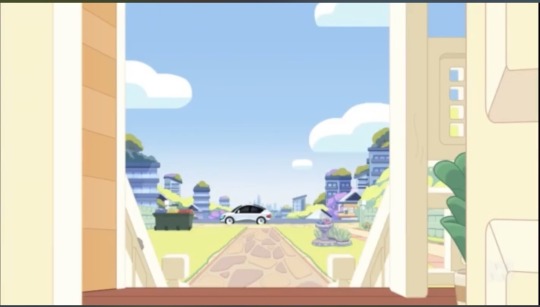

Compare future Brisbane with current Brisbane
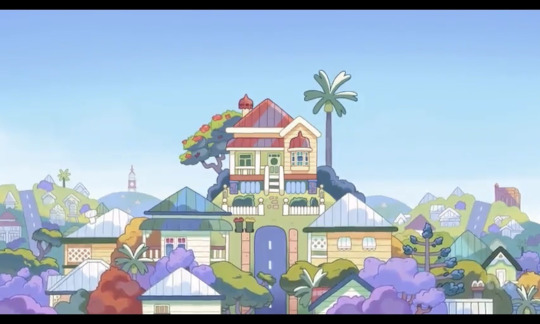
First of all, nice to see the house hasn’t fallen down, Dad and Mum have kept it in good repair (thanks Hammerbarn) and it now has solar panels, as do a number of other homes.
Many things have changed:
An incredible increase in land use density; multiple medium and tall towers (like in downtown) now are common in the suburban area. Assuming this means much more multifamily housing.
Roads much less dominant/conspicuous in the hills
Look how the trees have grown.
The communications towers on the hilltops are less conspicuous.
Three waste/recycling bins (addressing the green waste recycling issue)
Drone transport (for deliveries?)
Some things haven’t changed:
Sky is blue. That’s good.
The whole area hasn’t flooded from rising sea levels…
Adult Bluey drives, or at least is using a private vehicle, rather than something like an on-demand transit service. (Maybe the drone deliveries mean less congestion on the roads but traffic has never been a big issue in Bluey-Brisbane 😉)
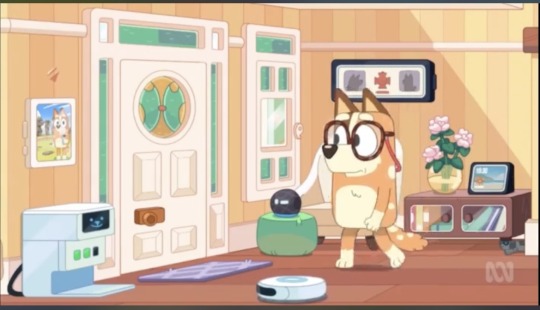
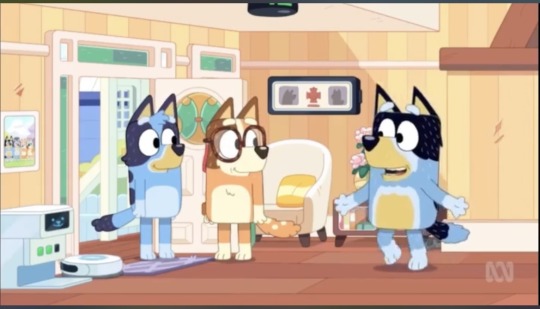
Inside the house is not crazy-futuristic, some electronic gadgets, like a Roomba. (I was expecting more high-tech like a Mr. Fusion from “Back to the Future” but that’d probably be by the kitchen or by the garbage wheelie-bins.)
I know my parents still have the same stereo they had 30+ years ago, and much of the same furniture.
Note that 30 years of progress has not improved how Roombas dock with their charging stations.
Some other new tech in the front hall:
Electronic digital picture frames with weird floating connections to the wall.
Wifi router thing on ceiling
Spherical thing (maybe something like an Alexa?)
New comfy chair, replacing the red one.

Density Increase
The increase in land use density in the Brisbane suburbs where the Heelers live is one of those dreams of land use planners; more density in already developed areas is generally considered a plus, assuming the infrastructure can accommodate it. Higher density means more people in a given area making public transit more efficient and reducing costs to serve the homes with utilities.
Is that kind of growth possible in only a few decades? Yes, here’s a North American example… this is where I grew up, in the early 1980s it looked like this in Mississauga, ON around the Square One shopping centre…

…and now it looks like this in the 2020s.

So that’s growth over about 30-40 years, which is a little longer than how much time has apparently elapsed in “Bluey”, but not a lot. It’s possible, and this kind of thing can snowball / accelerate once initial projects get underway.
Public opposition (NIMBY) can prevent this kind of thing from occurring in many cities.
79 notes
·
View notes
Text
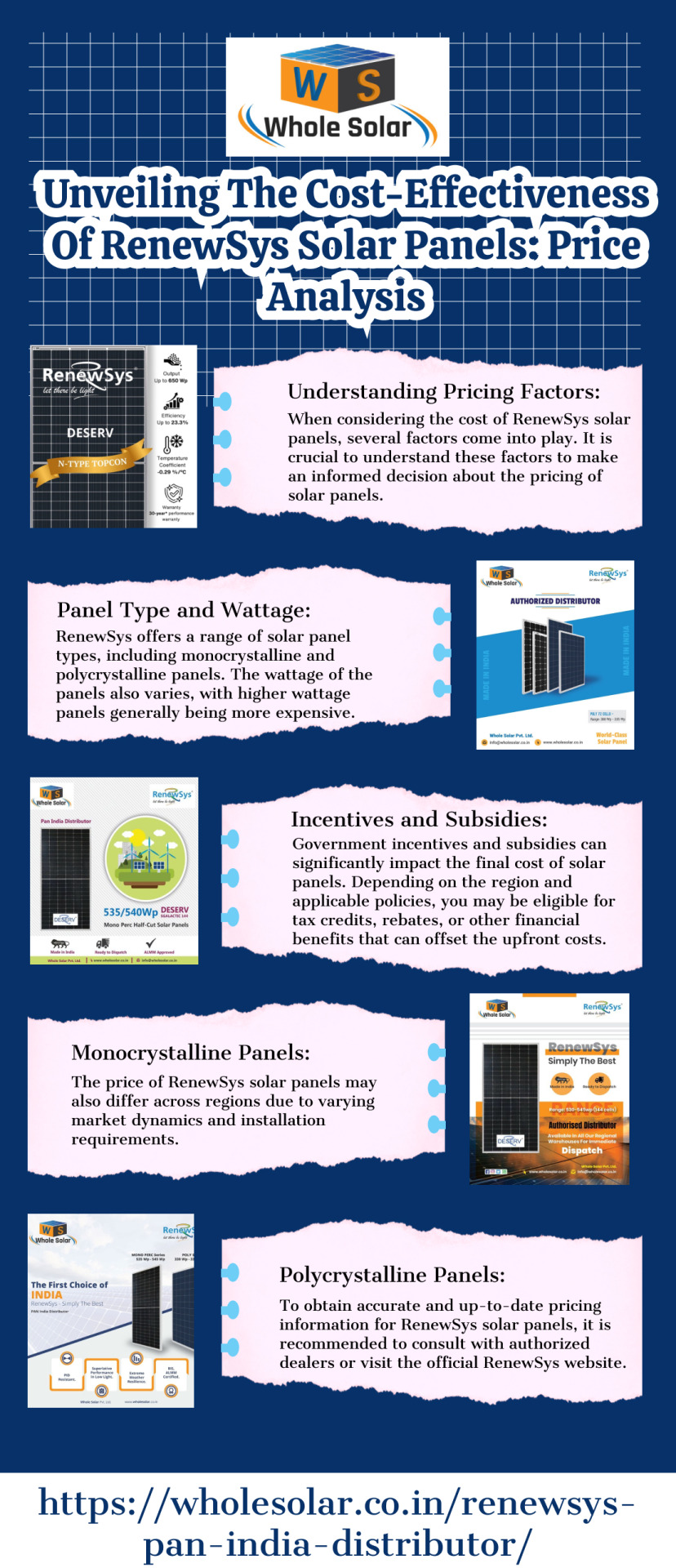
RenewSys Solar Panels offers a range of solar panel types, including monocrystalline and polycrystalline panels. The wattage of the panels also varies, with higher wattage panels generally being more expensive.
#Poly Crystalline Solar PV Module#Renewsys solar panel 540w price#Renewsys solar panel 535w price#Renewsys solar panel 335w price#Renewsys solar panel 330w price#Tier 1 brand solar panel#Best solar panel in India#Made in india solar panel#High efficiency solar panel#Renewsys Solar Panels Price in India#Renewsys Solar Panel Price#Renewsys Solar Panel Best Price#Renewsys Solar Panels#renewsys solar panel in india#authorised renewsys solar panel distributors#renewsys solar panel wholesale price#renewsys solar panel#official renewsys solar panel distributors#renewsys solar panel distributors#solar panels
0 notes
Text
Excerpt from this story from CNN:
William Fulford moved from Virginia Beach, Virginia, to a new waterfront development in Florida in 2023. Nestled between Sarasota Bay and the southwestern part of Tampa Bay, the new home by Bradenton Beach was everything Fulford, a retired custom homebuilder, ever wished for.
The developers of the new Hunters Point community, Pearl Homes, billed the property as the first “net-zero” single-family home development in the US, meaning residents produce more energy from solar panels than they need, with the excess energy either being stored or sold back to the grid – in a state where most electricity is generated by burning natural gas, a planet-warming fossil fuel.
They also boast some of the most sustainable, energy-efficient and hurricane-proof homes in the country: The streets surrounding the homes are intentionally designed to flood so houses don’t. Power and internet lines are buried to avoid wind damage. The sturdy concrete walls, hurricane-proof windows and doors are fortified with a layer of foam insulation, providing extra safety against the most violent storms.
Climate resiliency and storm protection were built into the fabric of the homes. And while the newly developed homes have endured a few storms since people moved in around February 2023, Hurricanes Helene and Milton put those features to the true test over the last two weeks.
Most of the residents living in Hunters Point heeded the mandatory evacuations ahead of Hurricane Milton’s landfall but Fulford, 76, stayed behind with wife, Sueann, just as they did during Hurricane Helene last month.
They stocked up on water and groceries. Fulford moved the car to higher ground. He tied up all patio and back deck furniture together. They brought everything from the garage, which made up the entire ground floor, up to the living spaces on the second floor. And, in the event of a worst-case scenario, Sueann insisted on getting life preservers.
“I’m just quite convinced that the strength and everything in this house. They built a great house, a strong house,” Fulford said. “And I just feel comfortable. I feel like we’re high enough up, even if we get a storm surge.”
When Gobuty started the design process for Hunters Point, it was imperative the homes be able to withstand Category 5 hurricanes. It’s the first residential development to get a Leadership in Energy and Environmental Design (LEED) net-zero certification in the world, according to the US Green Building Council.
Each of the three-story homes are designed like this: The ground floor is a garage designed with flood vents to drain rising water. The living spaces start on the second floor, which is intentionally built 16 feet above sea level. From the roof to its foundation, steel straps secure the entire structure. Solar panels are attached to the roofs’ raised vertical seams to prevent them from flying off.
The property also sits in a major flood zone, which meant the homes needed to be elevated to meet Florida’s building codes. Still, the developers went beyond the required 3 feet of fill dirt and used 7 feet instead to be safe.
17 notes
·
View notes
Text
The use of femtosecond lasers to form glass-to-glass welds for solar modules would make the panels easier to recycle, according to a proof-of-concept study conducted by researchers at the U.S. Department of Energy's National Renewable Energy Laboratory (NREL). The welds would eliminate the need for plastic polymer sheets that are now laminated into solar modules but make recycling more difficult. At the end of their useful lifespan, the modules made with the laser welds can be shattered. The glass and metal wires running through the solar cells can be easily recycled and the silicon can be reused. "Most recyclers will confirm that the polymers are the main issue in terms of inhibiting the process of recycling," said David Young, senior scientist and group manager for the High-Efficiency Crystalline Photovoltaics group in the Chemistry and Nanoscience department at NREL. Young is lead author of a new paper outlining the use of laser welds for solar modules. The paper, "Towards Polymer-Free, Femto-Second Laser-Welded Glass/Glass Solar Modules," appears in the IEEE Journal of Photovoltaics.
Read more.
18 notes
·
View notes
Text
If high-income countries are to decarbonize fast enough to stay within their fair-share of Paris-compliant carbon budgets, then urgent climate mitigation tasks – like building renewable energy capacity, insulating buildings, expanding public transit, innovating and distributing more efficient technologies, regenerating land, etc – need to happen very quickly. This “green production” requires mobilizing massive amounts of labour, factories, materials, engineering talent, and so on. In a growth-oriented scenario, this is difficult to do because our productive capacities are already devoted to other activities (activities that are organized around profit and which may not contribute to social and ecological objectives). So we need to either compete with existing forms of production (for labour, materials, energy etc, which can drive prices up), or otherwise increase total productive capacity (i.e., grow the economy). This cannot be done at just any desired speed. Under these conditions, there are very real physical limits to how fast we can decarbonize. Scaling down less-necessary production solves this problem, not only because of the two benefits indicated above, but also because it liberates productive capacities (factories, labour, materials) which can then be remobilized to do the production and innovation required for rapid decarbonization. For example, factories that are presently devoted to producing SUVs can produce solar panels instead. Engineers that are presently developing private jets can work on innovating more efficient trains and wind turbines instead. Labour that is presently employed by fast fashion firms can be liberated to train and contribute to installing renewable capacity, insulating buildings, or a wide range of other necessary objectives depending on their interests, through a public job guarantee program linked to green public works. This helps us rethink a longstanding question in ecological economics. Some ecomodernists have in the past argued that it is easier to achieve green transition in a bigger economy than in a smaller economy, because it means we have more capacity to devote to green production. But this fails to grasp the nature of the problem. Yes, a bigger economy may have more capacity, but in a growth-oriented scenario that capacity is already allocated. In this respect bigger economies face the same problem as smaller economies. But a degrowth scenario is not a “smaller economy” (i.e., a low-capacity economy). It is a high-capacity economy which is reducing less-necessary production, and therefore is suddenly endowed with spare capacity that can be redirected for necessary purposes. This is a unique situation that carries significant potential: it enables acceleration in the speed of green production and innovation at a rate faster than what can be achieved in a growth-oriented scenario.
46 notes
·
View notes
Text
World Investment Report unveils dynamic shift in global energy investments, breakthroughs in solar, and materials innovation
Here are the key findings:
Exponential growth in energy investments
Global energy investments are set to soar from $2.4 trillion in 2018 to a projected $3.1 trillion in 2024 – a steady climb at nearly 5% annually. Global clean energy investment now nearly doubles that of fossil fuels, set to leap from $1.2 trillion in 2018 to $2 trillion by 2024 – marking a bold pivot toward renewables.
The solar investment surge
Investments in solar represented ~ 59% ($393 billion) of all RE investments ($673 billion), driven largely by drop in solar panel costs.
APAC leads global solar investments
Region-wise, Asia-Pacific (APAC) is at the forefront of solar investments pouring $223 billion into solar in 2023. EMEA has experienced modest solar investment growth, with $91bn in 2023, followed by AMER region (North, Central and South America) with solar investments of $78bn.
Record-breaking solar PV panel efficiency
Solar PV monocrystalline modules have hit a new high with record-breaking 24.9% efficiency – a major leap in maximising solar energy potential. Multi-junction perovskite cells are set to disrupt the solar panel industry, promising higher efficiency, lower production costs and seamless integration with diverse surfaces – leaving traditional silicon panels in the dust.
Solar manufacturing now uses 88% less silicon per watt peak than in 2004
The manufacturing process has undergone significant improvements, resulting in a drastic reduction in silicon usage – from consuming 16 gm/Wp in 2004 to 2 gm/Wp in 2023. This 88% decrease in silicon consumption not only reflects the strides made in optimising material efficiency but also underscores the potential for further cost reductions and environmental benefits.
Utility-scale PV costs hitting new low
The global weighted average levelised cost of electricity (LCOE) for utility-scale solar PV dropped by 90% – falling from $0.460/kWh in 2010 to $0.044/kWh in 2023. At country level, the drop ranges from 76%-93% over the same period.
5 notes
·
View notes
Video
youtube
30000mAh 18W Solar Panel Power Bank – Power Up Your Adventures!
Introducing the ultimate power solution for your on-the-go adventures - the 30000mAh 18W Solar Panel Power Bank with 4 USB Outputs and Pass-Through Charging. Crafted from durable ABS+Silicone material, this powerhouse features a 30000mAh Li-polymer cell type, ensuring you have ample power wherever your journey takes you. Equipped with LED lightning support and a convenient LED Display, this power bank is a must-have for tech enthusiasts and outdoor enthusiasts alike. #PowerBank #FastCharging
With input interfaces for Micro USB and Type-C, and output interfaces including DC, Type-C, Four USBs, and Wireless charging, this power bank offers versatile connectivity options for a wide range of devices. Whether you're using an iPhone, Galaxy S8, Huawei, or iPad mini, this power bank has got you covered. Plus, with its solar panel charge function, you can stay charged even in the great outdoors. #TechGadgets #StayConnectedEverywhere
The 30000mAh capacity makes this power bank a portable powerhouse, perfect for those who need reliable power on the move. Its new private model design emphasizes solar charging for environmental protection and energy-saving benefits, making it the ideal choice for outdoor adventures and travel enthusiasts. The dual bright LED flashlight adds an extra layer of functionality, ensuring you're prepared for any situation, day or night. #BatterySaver #GadgetLovers
Experience the convenience and efficiency of the 30000mAh 18W Solar Panel Power Bank, a high-capacity and portable charging solution that keeps you connected and juiced up wherever you go. Say goodbye to low battery anxiety and hello to uninterrupted power with this innovative and environmentally friendly power bank. Stay connected, stay charged, and stay ready for anything with this essential tech accessory. #ChargeOnTheGo #TechEssentials
#youtube#Power bank high capacity#Power bank goal zero#Power bank 65w#Power bank 30000mah price#Power bank 12v#Power bank 40000 mah#Power bank zebronics#Power bank with wireless charging#Power bank mini#Power bank kit#Power bank 60000mah#Power bank 100000 mah#Power bank type-c#Power bank sale#Power bank 10000mAh#Power bank Walmart#Power bank zendure#Power bank xiaomi 20000
3 notes
·
View notes
Text
Solar Energy
Solar energy is a renewable and sustainable source of power derived from the sun's radiant light and heat. This energy can be harnessed through various technologies, primarily solar panels and solar thermal systems. It plays a crucial role in the transition toward cleaner and greener energy systems.
Key Features of Solar Energy:
Abundance: The sun provides an inexhaustible supply of energy, with enough sunlight hitting Earth in one hour to meet global energy needs for an entire year.
Clean Energy: Unlike fossil fuels, solar energy does not emit greenhouse gases or pollutants, making it environmentally friendly.
Scalability: Solar energy systems can be tailored for various scales, from small residential setups to large utility-scale solar farms.
Cost Efficiency: Over time, solar energy can significantly reduce electricity bills, and the cost of solar technology has been steadily declining.
Types of Solar Energy Systems:
Photovoltaic (PV) Systems: Convert sunlight directly into electricity using solar panels made of semiconductor materials.
Solar Thermal Systems: Capture and store heat from the sun for applications like water heating, space heating, or electricity generation.
Concentrated Solar Power (CSP): Use mirrors or lenses to focus sunlight onto a small area to produce heat, which is then converted into electricity.
Benefits:
Reduces dependency on nonrenewable energy sources.
Promotes energy independence.
Creates jobs in manufacturing, installation, and maintenance.
Enhances resilience by providing off-grid energy solutions in remote areas.
Challenges:
Dependence on weather conditions and daylight hours.
High initial setup costs, though they are offset by long-term savings and incentives.
Energy storage needs to address intermittent production.
Solar energy represents a cornerstone of sustainable development, helping combat climate change and offering a pathway to a low-carbon future.
3 notes
·
View notes